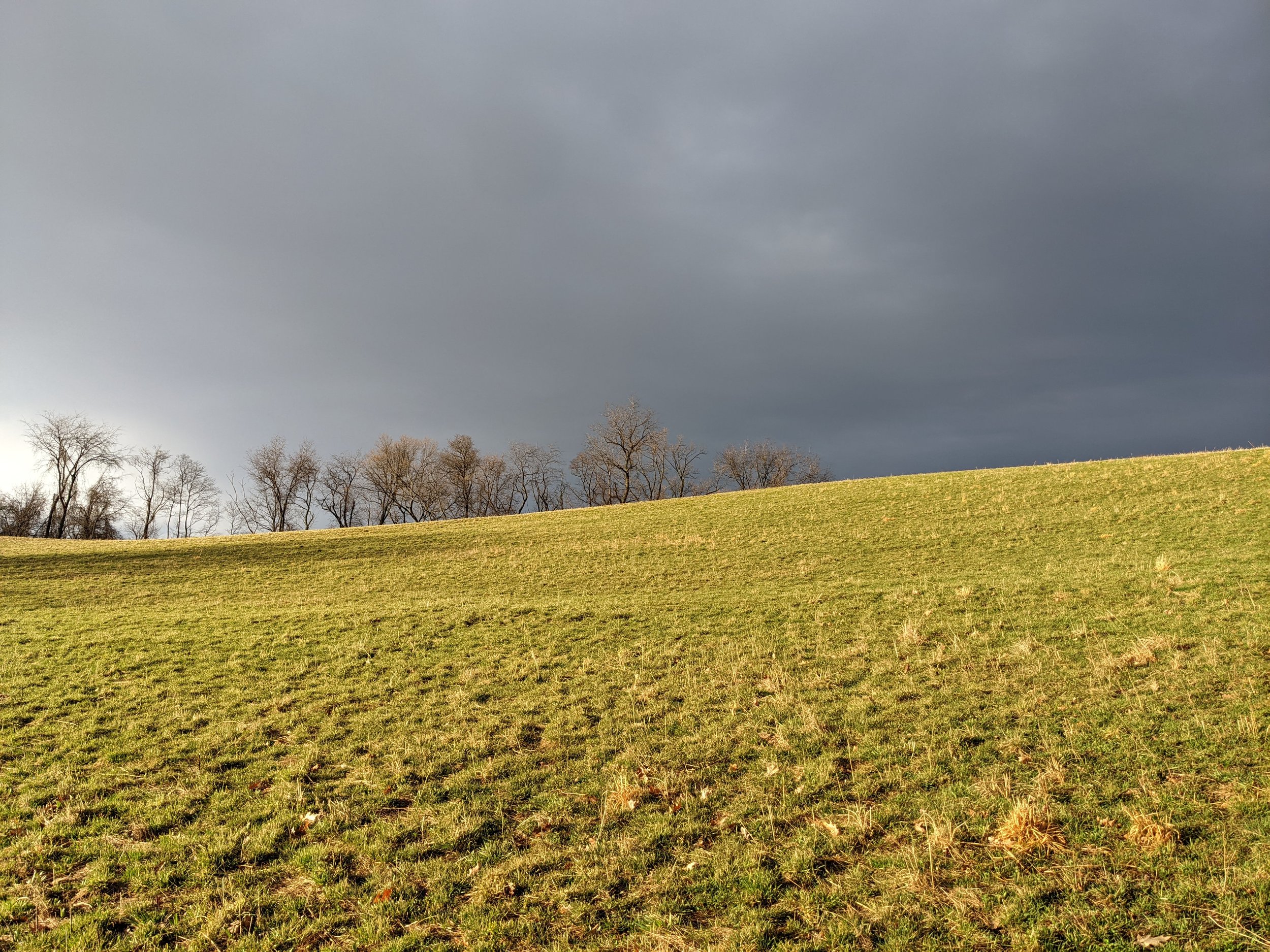What is regenerative agriculture?
We can help reverse the effects of climate change by sequestering carbon in soil. Using regenerative agriculture we are focusing on the ecosystem in the soil to maximize carbon sequestration.
There are four basic practices of regenerative agriculture:
Promote biodiversity
No till- maintain a living root at all times
Rotational grazing- avoid over grazing
Compost- reduce the use of artificial fertilizers
Comeback Hill practices all of these. We use cardboard piled with mulch and compost to create our garden beds. Our sheep are rotationally grazed to maintain our pastures, fertilize land to be used for future planting, and press down the grasses so we can more easily sow seeds. Our chickens help turn our compost, keep it rich with their waste as they forage. They reduce all of our food waste to near zero. We also rotationally graze the chickens after the sheep to apply and spread fertilizer, and keep weed and parasites under control. On our 13.5 acres we grow all sorts: apples, blueberries, wildflowers, vegetables, pumpkins, corn, and figure out how to grow it all together. Additionally, we keep bees to help pollinate everything.

Regenerative Agriculture Resources
-
Documentary on Netflix
https://kisstheground.com/
-
https://www.regenerativefarmersofamerica.com/
-
Meet Farmer Jesse at https://www.notillgrowers.com/
Don’t miss the you tube videos either! They really helped us get our start.
-
https://regenerationinternational.org/why-regenerative-agriculture/
-
https://www.nrdc.org/stories/regenerative-agriculture-101
-
Specifics about rotational grazing
https://pastureproject.org/

Make a donation.
Support Comeback Hill, your local regenerative agriculture.

